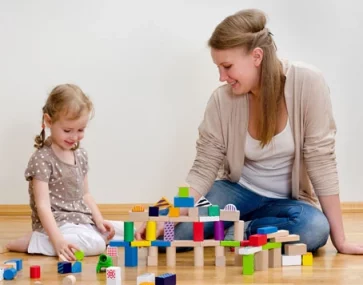Early intervention is key to preventing and addressing developmental delays or disabilities in children. It helps keep these children on track to make the most of abilities and skills developed during the early years.
Like learning and development are at their highest rate in the preschool years, early intervention for children with special needs, or developmental delays helps them avoid missing some of the most important learning and developmental milestones. It is forward-looking, even into adulthood, and can benefit immensely during the developmental years.
Red flags of Developmental Delays or Disabilities:
- Arms aren’t tucked in towards the body and fall to the sides
- More arching on the back (extension) compared to flexion
- Lack of arm/leg movements
- Not attempting to lift head to clear nose, no movements of legs
- Arms are not tucked into the body
Can You Help Prevent it at Home?
You can but always under the care and guidance of a skilled pediatric therapist. You can change the position of your child frequently, play on the back, side, and also tummy is equally important. Use different types of tummy time positions, use containers in a way that your child can turn in both directions. Professionals can apply these strategies skillfully.
Early Intervention Therapies
EI therapies can significantly improve the abilities of a child and help a child with developmental delays or disabilities to achieve desired milestones. Inasmuch as, early intervention can integrate with future social environments, including school, community, etc. As a child grows, they develop new physical, cognitive, and social skills at every age, from lifting the head and turning it sideways, to smiling and paying attention to faces at two months, playing, to dressing themselves by three years of age.
EI therapies begin with Pruning, which is for the infant or child who is not going through the typical brain development. This can happen with a child with brain injuries like cerebral palsy or neurodevelopmental disorders like Angelman syndrome, downs syndrome, etc. These brain injuries set the connections between brain cells loose, leading to developmental delays or disabilities for talking, eating, and responding properly.
Early intervention therapy can set them aright by taking the child through the early experiences in order to form the connections of brain cells. These connections can be formed at any point in life, even a 50 or 80-year-old can form new connections. Wondering how do they? It’s by practice, which needs to be continued until it becomes a skill also knows as neuroplasticity.
Early Intervention Therapies for Special Needs Assistance
Early intervention therapies cover a wide array of special needs assistance. There are speech and language therapy, intensive therapy, physical therapy, hydrotherapy, pediatric adaptive seating and mobility, spider cage therapy, lego therapy, occupational therapy, and much more. Each therapy has a different application based on the outcomes of diagnoses. Skilled pediatric therapists first diagnose the child and then determine which therapy will be right for a child.
Early Intervention Therapy at Hope AMC
Hope AMC in Dubai, UAE is a state-of-the-art pediatric medical and rehabilitation facility where you can get complete early intervention therapy solutions under a single roof. You can consult with highly qualified pediatric doctors and therapists.






